
Author(s)
JJJJJerome Ellis
“The Clearing: Melismatic Palimpsest” is a part of musician and writer JJJJJerome Ellis’s multi-faceted project The Clearing (book published by Wendy’s Subway and album of the same name released by NNA Tapes, 2021). Conceiving of the forest and its clearings as “sites of resistant black oralities for centuries,” Ellis explores how stuttering, blackness, and music can figure within practices of refusal against the hegemonic governance of time, speech, and encounter.
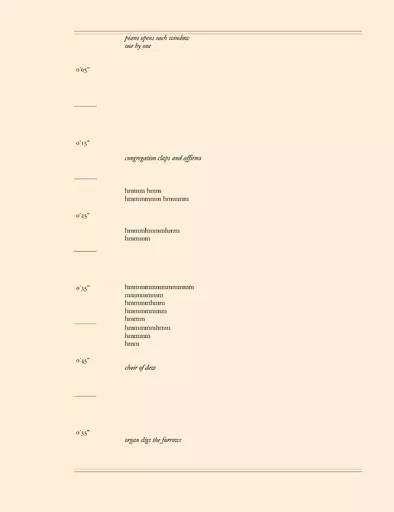
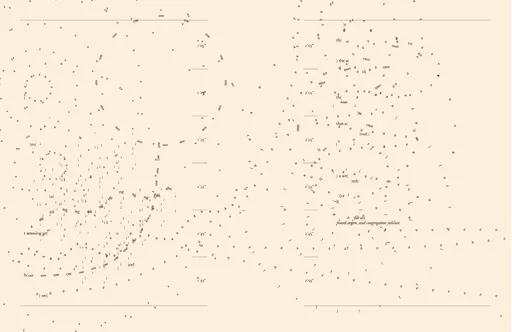

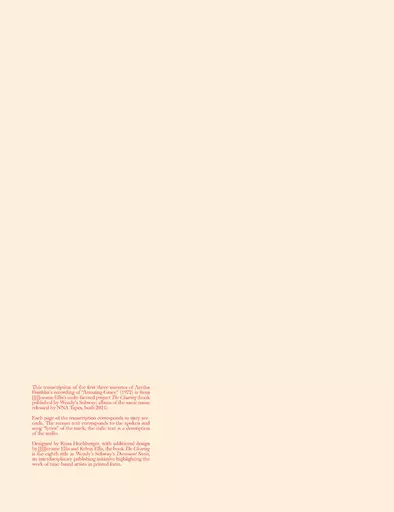
View transcription as downloadable PDF
The Clearing: Melismatic Palimpsest
Welcome to the Clearing!
I am writing from Lenapehoking, the traditional territory of the Lenape people. I acknowledge, respect, and honor them as the original stewards of this land. I acknowledge, respect, and honor their continued presence here.
IN NOMINE SANCTAE TRINITATIS INCIPIT LIBER YMNORUM / NOTKERI BALBULI COENOBIOTAE SANCTI GALLI, CONFESSORIS CHRISTI
“In the name of the Holy Trinity here begins the Book of Hymns / by Notker the Stutterer, a confessor of Christ, from the monastery of St. Gall.” 1
What is a bell? Is it a directly struck idiophone percussion instrument? 2 A herald of the hour? A body, complete with shoulder, waist, mouth, lips, tongue? 3 A call to prayer? If idiophone means, from Greek, “self-sounding,” can idiophones also be tools for the collective? Does the bell’s ringing reach the forest and its clearings, sites of resistant black oralities for centuries? The enslaved gathered in the woods at night to plan escapes and revolts, to dance, sing, and pray. But the clearing is also the act of clearing native plants and Native peoples. What dwells between noun and verb here? 4 A barely held breath, traveling past the past? Is the hush of the hush harbor a form of black stutter? How can clearing, the act of moving toward clarity, betray clarity and in fact invite opacity? What do clearing and clarity have to do with the clerestory, the “clear story,” the highest row of windows in a cathedral? Can one ever tell a clear story? I am writing from Lenapehoking, the traditional territory of the Lenape people. I acknowledge, respect, and honor them as the original stewards of this land. I acknowledge, respect, and honor their continued presence here. Light snows down through the clerestory onto the hair of the baptizands. What is baptism? The promise of octagonal transformation? 5 Is the clearing also a baptismal font, where one may receive a new name, surrounded by green, the octagon striving toward a circle? Who cleared it in the first place? Who is who, who is behind who, who held the hands that held the axes, who sits at a walnut desk across an ocean and smiles at a lunar hornet moth (Sesia bembeciformis) on a windowsill and in that smile sets off the clearing? Who tried to erase but forgot that full erasure is impossible for the blackboard is only pure black once? Who swung an ax unto a red horizon, faulty to a fault, for perhaps we all have to enter the forest at a different spot? Who first thought a clearing could be a place for green thought, black thought, underthought, the unthought 6 long enough to open the spirit to plainsong, then to diamond, then to horse-stillness, then to a black throat full of the unheard of? “We can almost hear you announce the Text.” 7 What is a palimpsest? A manuscript page where earlier text has been scraped or washed off and later yet more text written on top. Is the clearing a palimpsest? Is black music a palimpsest? Is one of its layers the coffle? Slaves up for purchase were chained together and forced to dance, sing, and play (fiddle, banjo, etc.) for an audience of prospective buyers and people who had gathered for the specular spectacle. The slaves were commanded to “look bright,” to perform joy. How does blackness hold joy? In 1834 an English geologist witnesses a coffle on its way to Natchez. The enslaved sing “Old Virginia Never Tire” as they march. 8 Does he question what he sees and hears? Does he imagine he’s seeing and hearing clearly, with no interference? Does he recognize what Saidiya Hartman refers to as “the opacity of black song,” which “enables something in excess of the orchestrated amusements of the enslaved and which similarly troubles distinctions between joy and sorrow and toil and leisure”? 9 What is opacity? A refusal of the light? What is refusal? What is revealed by the shared root between refusal and refund (re, back, fundere, pour)? Is refusal a pouring back of the baptismal waters? A rejection of the name? An evasion of interpellation? Do you go get water from a different source? Can stuttering, blackness, and music be practices of refusal? What would it mean to refuse the transparent waters in favor of the opaque waters? What would it mean to pour the glass back, to vanish from the window, to replace that window with a transparent mirror, to make a home in the opaque, obsidian, black glass? What is glass? A solid that flows? A record of breath? One layer in the palimpsest of a mirror? The first United States patent for a transparent, or one-way, mirror was published in 1903, the same year W. E. B. Du Bois published The Souls of Black Folk. 10 Is black music a one-way mirror? I am writing from Lenapehoking, the traditional territory of the Lenape people. I acknowledge, respect, and honor them as the original stewards of this land. I acknowledge, respect, and honor their continued presence here. What is fluency? A lack of stuttering? Speaking smoothly? With the smoothness of glass? Unto an asymptote of perfection? Is fluency transparent speech? “Within its political context, I . . . understand fluency as . . . a univocal and transparent articulation of oneself—an expression of what Arendt terms sovereign agency or mastery of oneself and others.” 11 What is the relationship between transparency and mastery? What is mastery? What can arise if we, following Jack Halberstam, choose to refuse mastery and pursue failure? 12 If blackness, following Christina Sharpe, is “anagrammatical,” is it blackness that frees the aster from the grip of the master? 13 Will you pour the leftover water under the flower of melisma? What could Fred Moten mean when he suggests that blackness is “stuttered, melismatic, gestural withdrawal?” 14 What is melisma? It typically refers to singing more than one note per syllable. In the Christmas carol “Angels We Have Heard on High,” the Glooooooooooooooooooorias are an example of melisma. Whereas the following words, “in excelsis deo,” are sung syllabically: each syllable receives one note. Can the distinction and spectrum between syllabic and melismatic singing help us think about stuttering? Why do many stutterers stop stuttering when they sing? Melisma is one of the ways music can distend, suspend, elongate, and dilate time. When I glottal block on a syllable, am I thrown into a kind of melisma in reverse, the voice advancing into silence rather than song, troubling the distinction between speaking and not speaking, utterance and innerance? This is not that. How is fluency secured by dysfluency? The two terms seem to suggest that fluency is the norm, and dysfluency deviance from the norm. But what if fluency were called dysdysfluency? How could we suggest that fluency is a narrowing of the fullness of dysfluency? What if dysfluency were called parafluency, a parallel flow, an alternate flow, a flow that ends up going in a different direction, to another country, only accessible via babbling brook? Melisma is sonic investigation into what lies beyond, within, beside the syllable. The glottal block finds the silence in the syllable and enters its inner sanctum. Melisma is not just “an ethos of singing.” 15 It’s an ethos of time. I am writing from Lenapehoking, the traditional territory of the Lenape people. I acknowledge, respect, and honor them as the original stewards of this land. I acknowledge, respect, and honor their continued presence here. What is a clock? Is it an instrument? A body with hands and a face? A capitalist rosary? Angels “ever see your face and there, without syllables requiring time to pronounce, they read what your eternal will intends. They read, they choose, they love. They ever read, and what they read never passes away. By choosing and loving, they read the immutability of your design. Their codex is never closed, nor is their book ever folded shut. For you yourself are a book to them and you are for eternity.” 16 What is eternity? The “whole, simultaneous, and perfect possession of boundless life”? 17 What is a syllable? A bell held on a glottal hilltop? The indestructible? 18 A gathering of sound (from Greek συλλαμβάνω, sullambánō, “I gather”)? Can a (held) syllable facilitate gathering? Why did slave owners often withhold clocks and watches from the enslaved, as well as knowledge of how to read these timepieces, in the antebellum southern US? Why were overseers advised to show up at unexpected hours at slave quarters after dark? On plantations, clock time was often communicated using horns and bells. What is the relationship between the plantation horn and the saxophone? What is a bell? Why is it that the same bell that calls us to prayer and meditation called the enslaved to the field? 19 Can black song heal these traumas arising from time and sound? How can we create gentler, more humane clocks? How can we learn from the dandelion clock? How can we learn from the water clock, or clepsydra (Greek for “water thief”)? Starting in the fifth century BCE, clepsydrae were used in Athenian courts as a way to apportion and limit the time for speeches. I am writing from Lenapehoking, the traditional territory of the Lenape people. I acknowledge, respect, and honor them as the original stewards of this land. I acknowledge, respect, and honor their continued presence here. Typically one day was allotted to court proceedings, and the total speaking time was split three ways between the accuser, the accused, and the judges. Speeches were thus made not “according to the time” but “according to the water.” 20 According to what water shall we speak then? Can we find a baptism in a clepsydra? ROSALIND What is ‘t o’clock? ORLANDO You should ask me what time o’day. There’s no clock in the forest. 21 What happens if we don’t try to define things like blackness and stuttering, but instead try to indefine them, let them be indefinite, leave them open to the breeze? From whom did I inherit the terms and structure of my asking? Why have I inherited terms but not interms, words that are closed instead of open, rooms without windows, a church without a clerestory? Theory refers to looking: if the word has windows, how do these windows affect the role the word can play in theory? 22 And if you open those windows such that the room of the word starts trembling with wind, what further theory becomes possible? What is the relationship between repetition and memory? Is the repetition inherent in stuttering an act of ancestral memory? How does a palimpsest support memory? Will you remind us that the bow is an instrument, the arrow a song, and this music structured by a matrix of hatred and a history of violence? Can the page hold the voice? Or does it always already betray the voice? What is melisma symptomatic of? Notker Balbulus (Notker the Stutterer) was a ninth-century composer, poet, and monk at the Abbey of Saint Gall in present-day Switzerland. In his time, long melismatic plainsong melodies (sometimes upward of a hundred notes!) were sung to the final syllable of the word alleluia during mass, on especially solemn or festive occasions during the Roman Catholic liturgical year. Because of their length, the melodies could be hard to memorize. In the dedicatory preface to his Liber Ymnorum (Book of Hymns), written in Latin, Notker recounts: “When I was still a young man and the very long melodies repeatedly committed to memory escaped my fickle little heart, I began quietly to contemplate how I might somehow tie them down.” As he sought a solution, a priest from Jumièges (in present-day France), “recently devastated by the Normans,” arrived carrying an antiphoner, a book of liturgical chants. 23 The antiphoner contained lines of poetic text set to melodies. Notker decided to write similar lines to set the alleluia melodies. He strung together syllables, like so many glass beads, each one usually, but not always, corresponding to a single note of the melody. He was trying to help himself, and others, to remember these melodies. I am writing from Lenapehoking, the traditional territory of the Lenape people. I acknowledge, respect, and honor them as the original stewards of this land. I acknowledge, respect, and honor their continued presence here. Are stutters trying to remind us of forgotten melodies? The clearing is a melismatic thing. The word stands at an intersection in the green forest. Through melisma the word pushes semantics to the margin and comes into something else. It’s this something else m. nourbeSe philip spoke about with me: “I think of the last section [of her book Zong!] that’s all about the spaces, but it’s the breaking up of the syllables and words into phonemes and vocables as happens when you stutter, you know. But you can, at least I can, hear something under that. You hear another language that’s floating underneath in that clearing, under this thing that’s happening up here [she gestures].” And later in our conversation: “the spirit needs that clearing. Which is what the black church has done in various ways. Black folk in the new world have created those clearings, those pools of sustenance. They haven’t destroyed what’s trying to destroy them, but they’re able to push it to the margins temporarily.” 24 Black melisma becomes a place of possible, momentary, transitory, glimpsed liberation, a gem of patience in the rockface. Can you hold this a little longer? This little lamp of melisma? Carry it into the field. On 6 August 2019, I was driving from Dayton to Kansas City sometime between eight and nine o’clock at night. What is an hour? I saw the red and blue flashing lights in my rearview. Praying those lights weren’t for me, I switched lanes to see if they would switch with me. They did. What is prayer? I pulled over to the shoulder, praying they wouldn’t pull over with me. They did. What is revealed by the fact that the earliest recorded use of the word hour in English is as a synonym for prayer? 25 We find this usage in Þe Ancrene Riwle (The Rule for Anchoresses), a thirteenth-century manual for the spiritual instruction of three young sisters, written in Middle English. I put the sedan in park. In the manual’s preface we find the phrase siggen hire ures, literally, “[they] say their hours”—they say their prayers at the prescribed hours. 26 As I waited for the officer to approach, I thought, well, this may be the end of my life, if this officer so chooses. The thought left me calm in the asymptote of the officer’s infinite power, for the fear was too far down to hear. Elegba protects the clearing, for the clearing is also the crossroads, the place of possibility. The officer came around the passenger side as I rolled down the window. “How are you this evening?” I’m terrified but can’t feel the terror! You? “You know your tail lights aren’t on?” I didn’t know that. I had forgotten to turn them on. But we both know that’s the least important layer of what’s happening here. I feel I need to perform two things for you: lack of blackness and lack of stuttering; that is, whiteness and fluency. The success of that performance has a direct, but also negligible(?), impact on whether or not I survive this encounter. If rap were coming out of the radio at this moment, would you perceive me as “more black”? I am speaking to you in “standard” (read: white) English. I am choosing synonyms swiftly if I feel a Stutter coming on. Can stuttering hold joy? I am writing from Lenapehoking, the traditional territory of the Lenape people. I acknowledge, respect, and honor them as the original stewards of this land. I acknowledge, respect, and honor their continued presence here. I am keeping eye contact with you. I know that if I stutter, I risk appearing like I’m lying. “Where are you headed?” As soon as you say “where” I know that I’m going to stutter when I say “Kansas City.” I could lie and say a nearby city, like Shawnee, but I choose to risk the Stutter. For the first time I avert my eyes as I stutter for maybe three seconds: “kkkkkkkkkkkkkkkkkkkkkkkkkkkkkkkkkKansas City.” I look back at you and search for signs of suspicion now that the Stutter has appeared. I. Cannot. Detect. Suspicion. Should I just tell you I speak with a Stutter? I choose not to. “Can I see your license and registration?” I hand them to you and you walk back to your car. Why have black thinkers—particularly experimental poets like philip, Mackey, and Moten—invested in the stutter as a generative site? Does the feedback loop of black being nonbeing being nonbeing generate a tremendous amount of noise pointing to a silence the stutter enshrines and protects? You return and hand back the documents. Notker’s music and texts are preserved in dozens of manuscripts. Manuscript means “written by hand”: what might a glottoscript look like? “What do you have in the back there?” Books, clothes, musical instruments. “Are you carrying any firearms?” My master looked at me and seemed to tremble. Is black stuttering a silent alleluia? Can you hear it? This whole time I’ve been suppressing the Stutter and its clearings as much as I can. For the clearing is also a place of vulnerability for the carrier and steward of the clearing, and I don’t feel safe opening it with you. But do you stutter? Are you suppressing clearings of your own? Notker’s innovation was to write poetic texts that corresponded to already existing melodies. The music came first and the words followed. “Words are candles lighting the dark,” writes another poet, Susan Howe, eleven hundred years after Notker. 27 Are words not also memories of a prior music? “Have a good night and make sure those tail lights stay on.” As you walk away, I think, what a nice man. And I laugh and weep and tremble inside at that thought, because I then think: no, he’s not a nice man. I’m simply still alive. I pull over at the next exit to get gas. Where did you go after our encounter? Did you pull more people over? Were you on your way home? Did you notice the silent seed planted by the Stutter in your breast? Who did you kiss that night before going to sleep? Can one ever tell a clear story?
Can melisma hold joy? A possible answer comes from Augustine, bishop of Hippo (in present-day Algeria). He uses the word jubilus or jubilatio to refer to melisma. Around 400 AD he writes: “For they who sing, either in the harvest, in the vineyard, or in some other arduous occupation, after beginning to manifest their gladness in the words of songs, are filled with such joy that they cannot express it in words, and turn from the syllables of words and proceed to the sound of jubilation. The jubilus is something which signifies that the heart labors with what it cannot utter. And whom does jubilation befit but the ineffable God? For he is ineffable whom you cannot speak. And if you cannot speak him, yet ought not to be silent, what remains but that you jubilate; so that the heart rejoices without words, and the great expanse of joy has not the limits of syllables?” 28 About sixteen hundred years later, in January 1972, Aretha Franklin sings “Amazing Grace” at the New Temple Missionary Baptist Church in Los Angeles. The recording is on her 1972 album Amazing Grace [see a transcription of the first three minutes of this recording above]. She takes a hymn she knows most people in the church will know and makes clearings all through it. She makes of every syllable an arrival. Rubato is necessary here. Steadiness cedes to unsteadiness to find a deeper steadiness. She dehisces 29 the hymn, makes it porous, that all may gather therein. She reminds us that a syllable is an opportunity for tarrying, for dilation, for divergence, for abundance. This is a rebuttal to “time is money”: Aretha and the congregation gather their wealth around them in the ample time she takes for the hymn. Hymn as a palace where everyone has a room. We hear the congregation receive again and again the black melismatic impact. 30 I am writing from Lenapehoking, the traditional territory of the Lenape people. I acknowledge, respect, and honor them as the original stewards of this land. I acknowledge, respect, and honor their continued presence here. The Clearing is an experiment in melismatic writing.
1 Notker Balbulus, The Liber Ymnorum of Notker Balbulus, ed. Calvin M. Bower (London: Henry Bradshaw Society, 2016), vol. 1, Text and Music, p. 130; vol. 2, Commentary, p. 2.
2 Idiophone means that the instrument’s body itself vibrates and radiates sound without the need of stretched membranes (membranophones), strings (chordophones), or columns of air (aerophones).
3 See Christopher Page, “Medieval Music: The Lands of the Bell Tower” (lecture, Gresham College, London, 5 May 2016).
4 Frank B. Wilderson III offers: “The Western’s cinematic imaginary casts the ‘Savage’ as a ‘clear and probable’ danger lurking just beyond the Settler’s clearing. The clearing, then, is imagined by the Western as a space whose safety is under constant, if sometimes unspoken threat from ‘Savages’ who inhabit the ‘frontier’ or who, typically at the beginning of a film, have inexplicably ‘jumped the reservation.’ Clearing, in the Settler/’Savage’ relation, has two grammatical structures, one as a noun and the other as a verb. But the Western only recognizes clearing as a noun. Westerns call on us to bow our heads reverently, to give this noun a proper name and refer to it fondly, the way Christians gave the child a proper name and called it ‘the Little Baby Jesus.’ Similarly, the Western interpellates us with such reverence to the clearing, whose proper name might be the Little Baby Civil Society, a genuflection bestowed on the clearing by, for example, Stagecoach and other films by John Ford. But prior to the clearing’s fragile infancy, that is, before its cinematic legacy as a newborn place name, it labored not across the land as a noun but as a verb on the body of the ‘Savage,’ speaking civil society’s essential status as an effect for genocide. What would happen to the libidinal economy of civil society if, over the course of one hundred years, it had been subjected to twenty thousand cinematic mirrors, films about itself in which it was cast not as an infant cartography of budding democratic dilemmas, but as a murderous projection, a juggernaut for extermination?” Wilderson, Red, White & Black: Cinema and the Structure of U.S. Antagonisms (Durham, NC: Duke University Press, 2010), p. 207. See also Tiffany Jeannette King, In the Clearing: Black Female Bodies, Space and Settler Colonial Landscapes (PhD diss., University of Maryland, College Park, 2013),drum.lib.umd.edu
5 Historically, Christian baptisteries were often octagonal. The number eight symbolizes eternity in some branches of Christianity.
6 See Saidiya V. Hartman and Frank B. Wilderson III, “The Position of the Unthought,” Qui Parle 13, no 2 (Spring/Summer 2003), pp. 183–201.
7 Emily Dickinson to Perez D. Cowan, c. February 1873, Dickinson Electronic Archives, archive.emilydickinson.org/correspondence/cowan/l386.html]].
' target='_blank' class='ul'>8 See George Featherstonhaugh, Excursion Through the Slave States, From Washington on the Potomac, to the Frontier of Mexico, Vol 1 (London: John Murray, 1844), pp. 120–123.
9 Saidiya V. Hartman, Scenes of Subjection: Terror, Slavery, and Self-Making in Nineteenth-Century America (New York: Oxford University Press, 1997), p. 36.
10 See Emil Bloch, Transparent Mirror, US Patent 720877A, filed 26 September 1902, and issued 17 February 1903.
11 Joshua St. Pierre, Fluency Machines: Semiocapitalism, Disability, Action (PhD diss., University of Alberta, 2018), p. 20.
12 See Jack Halberstam, The Queer Art of Failure (Durham, NC: Duke University Press, 2011), p. 11.
13 See Christina Sharpe, In the Wake: On Blackness and Being (Durham, NC: Duke University Press, 2016), p. 76.
14 Fred Moten, Stolen Life (Durham, NC: Duke University Press, 2017), p. 243.
15 Grove Music Online, s.v., “Melisma,” by Richard L. Crocke, accessed 17 April 2021,doi.org
16 Saint Augustine of Hippo, Confessions, trans. Henry Chadwick (Oxford: Oxford University Press, 1991), p. 283.
17 Boethius, Theological Tractates and the Consolation of Philosophy, trans. H. F. Stewart, E. K. Rand, and S. J. Tester (Cambridge, MA: Harvard University Press, 1973), p. 423.
18 See Roberto Calasso’s discussion of Vedic understandings of the syllable in Literature and the Gods (New York: Knopf, 2011), pp. 153–158.
19 See Mark M. Smith, Mastered by the Clock (Chapel Hill, NC: University of North Carolina Press, 1997) for a robust discussion of time and sound in the antebellum South.
20 Gerhard Dohrn-van Rossum, History of the Hour: Clocks and Modern Temporal Orders, trans. Thomas Dunlap (Chicago: University of Chicago Press, 1996), p. 23.
21 William Shakespeare, Act III, Scene 2, As You Like It, ed. David M. Bevington (Peterborough, Ontario: Broadview Press, 2011).
22 “Theory” derives from a Greek verb meaning “to look.”
23 Balbulus, The Liber Ymnorum, p. 2.
24 Personal communication with m. nourbeSe philip.
25 That is, the earliest recorded use according to the current version of the Oxford English Dictionary. Oxford English Dictionary, 2nd ed. (2004), s.v., “hour.”
26 Anonymous, Ancrene Riwle, trans. M. B. Salu (London: Burns & Oates, 1955).
27 Susan Howe, interview by Edward Foster, Talisman: A Journal of Poetry and Politics, no 4 (Spring 1990), p. 163.
28 Saint Augustine of Hippo, cited in James McKinnon, ed. Music in Early Christian Literature (New York: Cambridge University Press 1987), pp. 156–157.
29 Theodora Danylevich, Fred Moten, and Jared Sexton have helped me think about dehiscence. See Danylevich, “Beyond Thinking: Black Flesh as Meat Patties and The End of eating Everything,” Rhizomes: Cultural Studies in Emerging Knowledge, no. 29 (2016), [Moten, “Black Op,” PMLA 123, no. 5 (October 2008): 174301747; and Sexton, “The Social Life of Social Death,” InTensions Journal, no. 5 (Fall/Winter 2011), pp. 1–47.
30 Here I am indebted to Ashon Crawley’s work on black church music, Blackpentecostal Breath: The Aesthetics of Possibility (New York: Fordham University Press, 2017).
“The Clearing: Melismatic Palimpsest” is a modified version of JJJJJerome Ellis’s “Preface or Prevoice or Melismatic Palimpsest,” which together with “Waters” was originally published inThe Clearing(New York: Wendy’s Subway, 2021).Designed by Rissa Hochberger, with additional design by JJJJJerome Ellis and Kelvin Ellis,The Clearingis the eighth title in the DocumentSeries, an interdisciplinary publishing initiative highlighting the work of time-based artists in printed form. For more information, visit Wendy’s Subwayhere].
Related
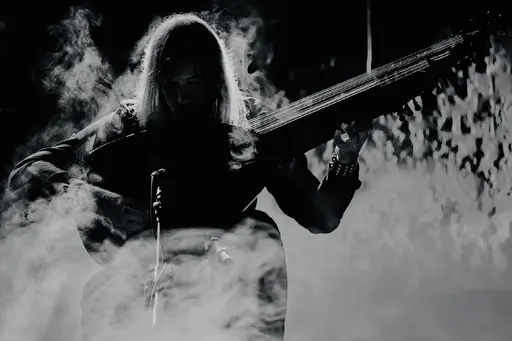
“Rhythm Travel” (1995) was published in Amiri Baraka’s short story collection, Tales of the Out & the Gone (Brooklyn: Akashic Books, 2007), republished here with kind permission of Akashic Books.

Temporal drag, erotohistoriography, chronomornativity, horniness under capitalism, rhythm, dancing, and crip time.
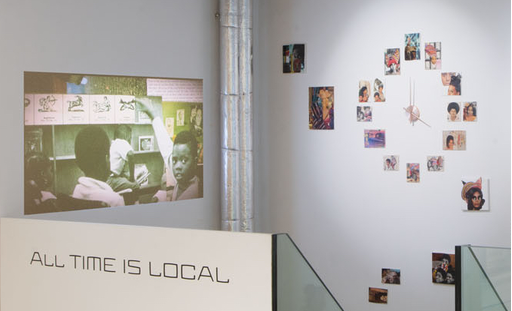
Black Quantum Futurism (Camae Ayewa and Rasheedah Phillips) in conversation with Jeanne van Heeswijk and Rachael Rakes.
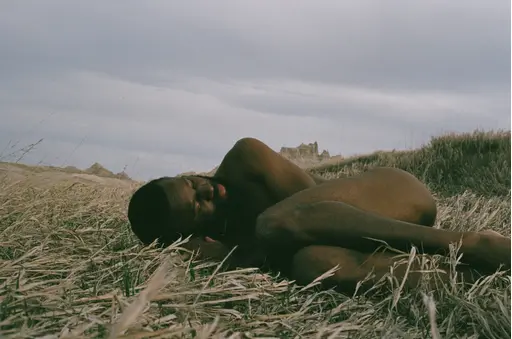
“The Clearing: Music, Dysfluency, Blackness, and Time” was originally published in Journal of Interdisciplinary Voice Studies, 5, no. 2, 2020, pp. 215–233 and is republished here in revised form with kind permission of the author.
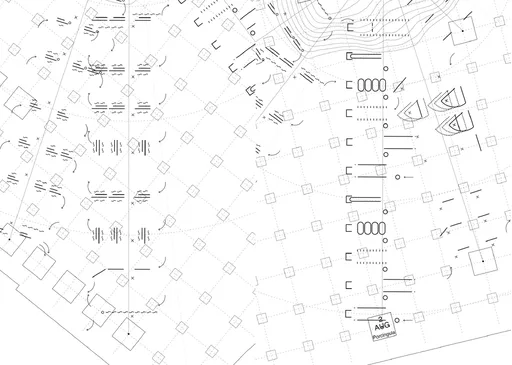
When Indigenous communities are asked to provide proof of their connection to ancestral lands, what Western legal forums accept as documentation does not truly represent or respect tribal culture and traditional formats of knowledge transfer.

How do we reckon with our attachments to place, and their knotted historical relations? A meditation on maritime trade routes, SEA – SHIPPING – SUN (2021), is a short film directed by Tiffany Sia and Yuri Pattison shot over the span of 2 years to render a simulated duration of a day, from The film is set against a soundtrack of shipping forecasts from archival BBC Radio 4 broadcasts. The sun emerges and disappears, again and again.dawn until dusk.

In this essay, Amelia Groom responds to Tehching Hsieh’s One Year Performance 1980–1981: Time Clock Piece (1980–1981), one of the works on view as part of the No Linear Fucking Time exhibition at BAK, basis voor actuele kunst, Utrecht. Through a reading of Dolly Parton’s contemporaneous antiwork anthem 9 to 5 (1980), Groom reflects on historical shifts in the ways that workers have been and continue to be exploited through techniques and technologies of time.

Grappling with the imposed linearity of timespace as a fundamental feature of colonial violence, this essay by Promona Sengupta (also known as Captian Pro of the interspecies intergalactic FLINTAQ+ crew of the Spaceship Beben) proposes a mode of time travel that is “untethered from colonial imaginations of the traversability of time and space.”

Weird Times (2021), is a 30-page chapbook by artists Tiffany Sia and Yuri Pattison on time-telling and hegemony. Featuring writing by Sia and images selected by Pattison, it is a brief history of the development of time-keeping technologies. The clock is disassembled as a political tool, a metronome of coercion and an accelerant of war power. Out of these mechanisms, resistant counter-tempos emerge.
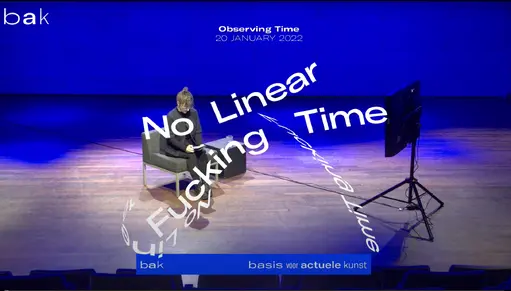
An online conversation with performance artist Tehching Hsieh, writer Amelia Groom, and writer and curator Adrian Heathfield, moderated by BAK curator of public practice Rachael Rakes on 20 January 2022. The conversation takes Hsieh’s work as a starting point in addressing performative time, labor time, gaps, and rhythms of endurance, among other things.
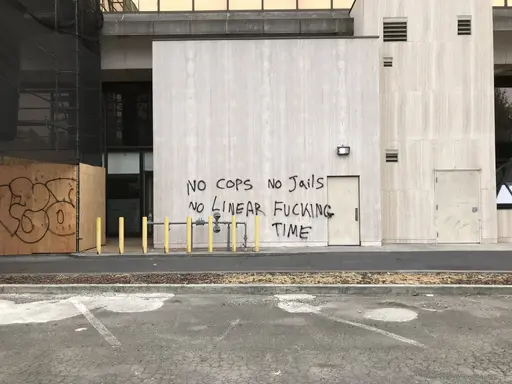
The “No Linear Fucking Time Bibliography” is an evolving resource which compiles selected scholarly and artistic texts relating to the various strands of study involved in this project.

In “Reclaiming Time: On Blackness and Landscape” (first published in PN Review 257 in 2021), poet Jason Allen-Paisant traces the racialized social contexts and modern environmental constructs that “disproportionately rob Black lives of the benefits of time.”

While walking through the “Nothing To Declare” arrivals gate at London Stansted Airport, Sam Keogh is confronted by three border guards: a pig, a unicorn, and a worried cartoon clock.

In this conversation with Walidah Imarisha (first published in Toward the Not Yet: Art as Public Practice, published by BAK and MIT Press, 2021), the writer and activist outlines her concept of “visionary fiction” as an imaginative practice to emancipate futures from the stronghold of linear time.
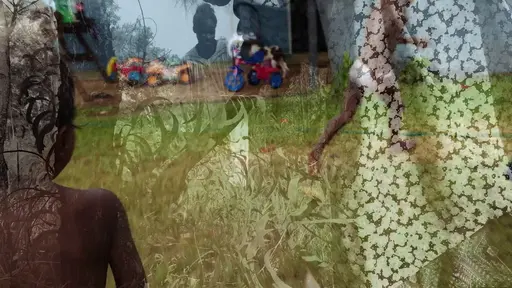
Drawing from her work as part of the Karrabing Film Collective, Elizabeth A. Povinelli’s essay “In Some Places the Not-Yet Has Long Been Already” (which first appeared in Toward the Not Yet: Art as Public Practice, published by BAK and MIT Press, 2021) contrasts the temporal orientation of late settler liberalism—which is troubled by the coming catastrophes of climate collapse—with the ancestral catastrophes of coloniality and enslavement, which are both past and present.

Designed by Rissa Hochberger, with additional design by JJJJJerome Ellis and Kelvin Ellis, the book The Clearing is the eighth title in Wendy’s Subway’s Document Series, an interdisciplinary publishing initiative highlighting the work of time-based artists in printed form.

In her text “Dearest Zen (Letters to Lichen),” artist and scientist Adriana Knouf presents future love letters written to lichens, symbiotic organisms of fungi and algae or cyanobacteria.

In “Immortals: On the Ancient Future Lives of Stone and Plastic,” Marianne Shaneen blends stories, histories, and ontologies of two substances: stone and plastic.

“The Clearing: Melismatic Palimpsest” is a part of musician and writer JJJJJerome Ellis’s multi-faceted project The Clearing (book published by Wendy’s Subway and album of the same name released by NNA Tapes, 2021). Conceiving of the forest and its clearings as “sites of resistant black oralities for centuries,” Ellis explores how stuttering, blackness, and music can figure within practices of refusal against the hegemonic governance of time, speech, and encounter.